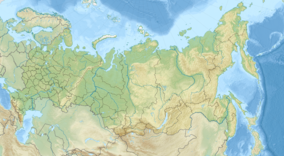
Voronezh Nature Reserve is a Russian 'zapovednik' located 40 km north of the city Voronezh and 500 km south of Moscow. One of the oldest nature reserves in Russia, Voronezh was the world's first experimental beaver nursery for breeding and studying the beaver. The reserve is situated in the Usmansky District of Voronezh Oblast, and in Lipetsk Oblast. It is part of a UNESCO-MAB Biosphere Reserve. Its official name as of 2013 is "Voronezh Peskov Nature Reserve" in honor of journalist and writer Vasily Peskov. The reserve was created in 1927, and covers an area of 31,053 ha (119.90 sq mi).

Zhiguli Nature Reserve is a Russian 'zapovednik' located on the Samara Bend in the Samara region, where the Volga River swings around the Zhiguli Mountains. The reserved is situated in the Stavropolsky District of Samara Oblast. The reserve is important because of its scientific value in the biodiversity of its closely placed variety of habitats. In 2007, the Zhiguli Reserve was added to the UNESCO Middle Volga Biosphere Reserve, along with the surrounding Samarskaya Luka National Park.
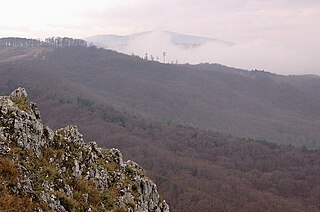
Zeya Nature Reserve is a Russian 'zapovednik' located over the mountainous headwaters of the Zeya River, on the eastern end of the Tukuringra Range, where it joins the Dzhagdy, in the Amur Region of the Russian Far East. It was created in part to serve as a "reference plot" for the study of the ecological impact of the Zeya Dam and the Zeya Reservoir which were built in the 1960s and 1970s. The ground cover in the reserve is primarily taiga, of mostly larch and Mongolian oak. The reserve is situated 13 km north of the city of Zeya, in the Zeysky District of Amur Oblast.

Belogorye Nature Reserve is a Russian 'zapovednik', one of the last intact riverine old-growth oak forests, which was once representative of the East European forest-steppe. The reserve is one of the oldest and smallest nature reserves in Russia, first formed in 1924 but reorganized several times since. It is on the southwestern slope of the Central Hills on the western edge of Russia. The reserve is situated in the Belgorodsky District of Belgorod Oblast. The reserve was created in 1935, and covers an area of 2,131 ha (8.23 sq mi).

Bolshekhekhtsirsky Nature Reserve is a Russian 'zapovednik' covering and named for the Big Khekhtsir Ridge, about 20 km south of the city of Khabarovsk, in the Russian Far East. The area is noteworthy for its position - close to a city and relatively open to public hikers on certain trails - and for being an island of mountain-forest biodiversity surrounded by lower river floodplains. The reserve is situated in the Khabarovsk Krai. The reserve was created in 1963, and covers an area of 45,439 ha (175.44 sq mi).

Rostov Nature Reserve is a Russian 'zapovednik' that protects a variety of sensitive southern European steppe wetlands, the largest herd of wild horses in Europe, and also wetland habitat for birds. The protected areas are divided into five sections that cover the waters of Lake Manych-Gudilo, islands in that lake, surrounding steppe and shore lands. The reserve is situated in the Orlovsky District, of Rostov Oblast, about 100 km northeast of Rostov-on-Don. It is part of a Ramsar Wetland site of international importance.
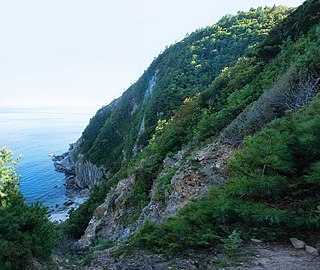
Lazovski Nature Reserve is a Russian 'zapovednik' that sits on the southeastern slopes of the Sikhote-Alin mountain range, down to the coast of the Sea of Japan, in Primorsky Krai in the Russian Far East about 150 km due east of Vladivostok. The reserve is 95% forested, with the largest stand of yew trees in the Russian Far East, and has been the subject of scientific study since the 1800s for its rich communities of plants and animals found in the transition mountain to maritime zones in a temperate, rainy forest. Lazonvsky Reserve contains more species than any other reserve in the Russian Far East, and 60% of the species in the Priomorky region are found on the reserve. It is jointly managed with the Zov Tigra National Park, located about 50 km to the northwest. The reserve is situated entirely within the Lazovsky District of Primorsky Krai. The reserve was created in 1957, and covers an area of 120,989 ha (467.14 sq mi).

Bastak Nature Reserve is a Russian 'zapovednik' located in the Amur River basin in the Russian Far East. The reserve's territory covers the south-eastern spurs Bureya Range and the northern outskirts of the Sredneamurskaya lowlands. The reserve is situated in about 10 km north of the city of Birobidzhan in the Birobidzhansky District, and is the only national reserve in the Jewish Autonomous Oblast.

Bolon Nature Reserve is the oldest Russian 'zapovednik' in the Russian Far East. It is located on the Middle Amur River lowlands adjacent to the south-west of Lake Bolon. The reserve covers the wetlands of international importance. Large numbers of migratory waterfowl use the area for nesting and stopovers on long flights. The reserve is situated half way between the city of Khabarovsk and Komsomolsk-on-Amur, in the Amursky District of Khabarovsk Krai. The reserve was created in 1997, and covers an area of 100,000 ha (390 sq mi).

Botcha Nature Reserve is a Russian 'zapovednik'. It is the northernmost reserve inhabited by the endangered Amur Tiger. The reserve is located in the north-eastern part of the Sikhote-Alin mountain range; it includes the Botchi River basin on its eastern slopes. The reserve is about 120 km south of the port city of Sovetskaya Gavan in the Sovetsko-Gavansky District of Khabarovsk Krai. The reserve was created in 1994, and covers an area of 267,380 ha (1,032.4 sq mi).

Sokhondo Nature Reserve is a Russian 'zapovednik' in the south of Eastern Siberia, 25 km north of the border with Mongolia. It is the farthest source of the Amur River, and is centered on the Sokhondo Mountain massif, in the highest sector of the Khentei-Chikoy Highlands in the Khentei Range mountain range. The Sokhondo massif has two peaks, and is an ancient volcano. Also within the borders are many lakes of glacial origin. In 1985, Sokhondo was named a UNESCO MAB Biosphere Reserve. The reserve is situated in the Chita district of Chita Oblast.

The Khopyor Nature Reserve is a Russian zapovednik that protects a 50-km-long stretch of the Khopyor River in the Voronezh Oblast. About 80% of the area is covered by forests, floodplain, and upland oak woods, with small areas of steppe and meadowlands. There are about 400 lakes and oxbows. The reserve is situated in the Novokhopyorsky District of Voronezh Oblast.

Nora Nature Reserve is a Russian 'zapovednik' on the northeastern part of the Amur-Zeya lowland plain between the Nora River and the Selemdzha River. The reserve is known for its herd of Norsk roe deer, the largest migrating herd in the world, with 5,000-7,000 individuals migrating through every September. The terrain is half forested, and half wetland and bogs, in the meeting zone between Siberian, Okhotsk, and Mongolian plant and animal communities. The reserve is situated in the Selemdzhinsky District of Amur Oblast.
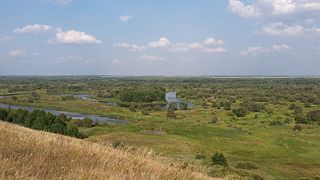
Voronina (Voroninsky) Nature Reserve is a strict ecological reserve located in the valley of the Vorona River, in the forest-steppe zone of southwest Russia. The Voroninsky Reserve protects riverine wetlands in the southeast of the Oka–Don Plain. The reserve is situated in Kirsanovsky and Inzhavinsky districts of Tambov Oblast, about 100 km southeast of the city of Tambov. It was created in 1994, and covers an area of 10,819 ha (41.77 sq mi).
Prisurski Nature Reserve is a Russian zapovednik in the northern Volga Uplands of the East European Plain. It protects for study an area of forest-steppe and mixed forest, with sections in different parts of Chuvashia. The largest sector is the Alatyrski Nature Reserve, located in the valley of the Sura River, and two small steppe sections to the southeast. The reserve is situated in the Alatyr, Chuvash Republic District of the Chuvash Republic. It was set aside as a reserve in 1995 to protect the largest and least disturbed area of southern taiga lowland forest in Chuvashia, as well as steppe habitat at the northern edge of its range. A particular concern was protecting habitat of the muskrat and seasonal waterfowl. The reserve covers an area of 9,150 ha (35.3 sq mi).

Volga-Kama Nature Reserve is a Russian 'zapovednik' at the confluence of the Volga River, the Kama River, and the Myosha River. There are two sections to the reserve, one on the left bank terraces of the Volga, at the actual meeting point of the rivers, the other section about 100 km up the Volga on the western outskirts of the city of Kazan. The reserve is situated in the Zelenodolsky Districts and Laishevsky District of Tatarstan. It was formally established in 1960 to protect remaining forest and forest-steppe habitat of the middle Volga region, and has an area of 8,024 ha (30.98 sq mi). A particular focus of scientific study is the effects of the Kuybyshev Reservoir on the local environment. The reservoir was completed in the mid-1950s, and is the largest reservoir in Europe. The Volga-Kama Reserve is part of a UNESCO Biosphere Reserve.
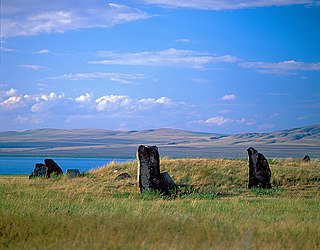
Khakasski Nature Reserve is a Russian 'zapovednik' covering two large mountain areas, and a cluster of seven steppe sites located within the left bank of the Minusinsk depression. The reserve is situated in the Tashtypsky District of Khakassia. It was originally created to preserve steppe ecosystems, wetlands and waterfowl nesting sites, and a historical complex of monuments and cemeteries from the 4-11 centuries BC. The reserve is particularly noted for its variety of large lakes on the Yenisei River migration route for birds. The current configuration of protected sectors was established in 1999, and covers a total area of 2,675.58 km2 (1,033.05 sq mi).

Khanka Nature Reserve is a Russian 'zapovednik' that covers portions of the shore and waters of Lake Khanka, the largest freshwater lake in the Russian Far East. It is an important area for nesting and migrating waterfowl and other birds. The reserve is divided into five distinct sectors on the southern and eastern shores of the lake. The reserve is situated in the Spassky District, in the southwest of Primorsky Krai. It was formally established in 1990, and covers an area of 437 km2 (169 sq mi). It is part of a UNESCO Biosphere Reserve.

The Da Hinggan-Dzhagdy Mountains conifer forests ecoregion covers the Greater Khingan Mountains of Northeast China, and across the border north into the Russian Far East where it follows the mountain ridge for another 500 km to the east. The mountain forests exhibit a floral community called "Daurian flora", a combination of the Siberian taiga to the north and the Manchurian floral types to the south. The eastern slopes are steep and drained by many rivers, the western slopes are gentler, and there are grasslands on some slopes. The ecoregion is in the Palearctic realm, with a subarctic climate. It covers 35,199,998 km2 (13,590,795 sq mi).

The Ussuri broadleaf and mixed forests ecoregion covers a mountainous areas above the lower Amur River and Ussuri River in Primorsky Krai and Khabarovsk Krai in the Russian Far East. The ecoregion is in the Palearctic realm, with a Humid Continental climate. It covers 187,357 km2 (72,339 sq mi).

